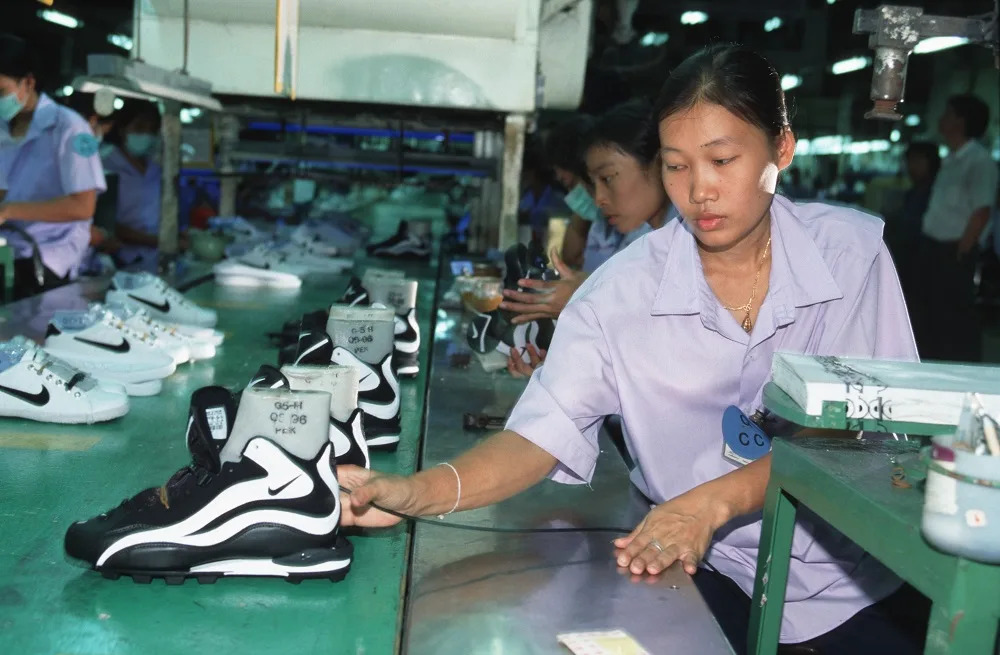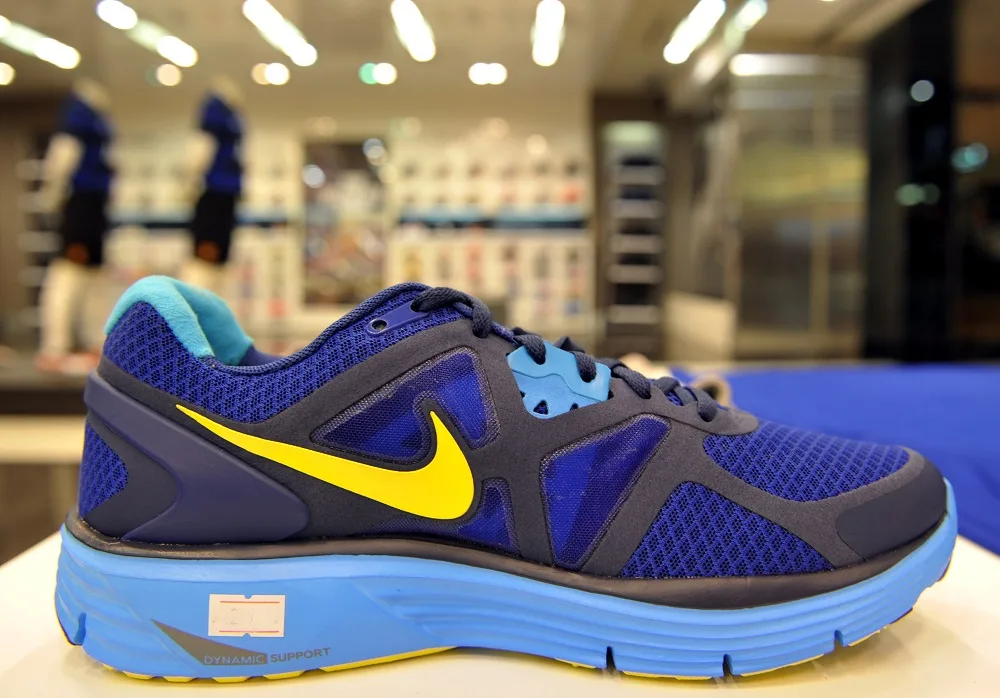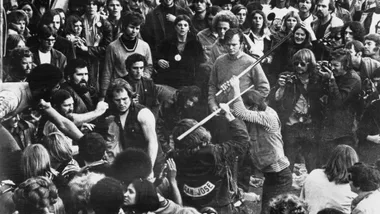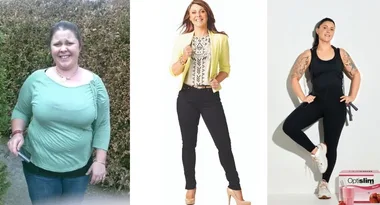Their brand celebrates humanity and all its potential, but Nike has a history of treating its workers as if they were not human at all.
In 1991, American labour activist Jeffrey Ballinger published a report on Nike’s factory practices in Indonesia, exposing a scandal: below-minimum wages, child labour and appalling conditions likened to a sweatshop – a factory or workshop where employees work long hours for low money in conditions that are hazardous to health.

US College student Jim Keady also delved into Nike’s inhumane production practices in the 90s, and in his film Behind the Swoosh exposed how workers, who were paid $US1.25 per day, were forced to live in slums near open sewers, and shared toilets and bathwater with multiple families.
And in 1996, Life magazine ran a reportage on child labour that included a shocking photo of a 12-year-old Pakistani boy sewing a Nike soccer ball.
Sweatshops are common in developing countries, including in Indonesia, India, Thailand, Bangladesh and Cambodia, where labour laws are rarely enforced.

The factories, which are often housed in deteriorating buildings, are cramped with workers and pose fire dangers. Workers are also restricted access to the toilet and drinking water during the day.
Companies such as Nike and Adidas will spruik the line that their factories have strict codes of conduct, but it is difficult to know if those codes are enforced in developing countries.
As the world fumed over Nike’s apparent lack of regard for its foreign workers in the 90s, the American company pledged to overhaul the appalling conditions.
But was it lip service, or did they actually do something?

In 2001, Leila Salazar, corporate accountability director for Global Exchange, told The Guardian: “During the last three years, Nike has continued to treat the sweatshop issue as a public relations inconvenience rather than as a serious human rights matter.”
The company disagreed.
”I think we’ve made significant strides, and I’m proud of what the company has done over the last three years,” said Nike’s chairman Phil Knight. “It may take a while longer, but I do think that it will be understood that Nike is a good citizen in all the countries that it operates in.”
In 2007, as the world began embracing “corporate responsibility,” Nike provided a list of its 700 factories around the world as a way of allowing others to check if it was adhering to its policies. Nike spokesman Lee Weinstein said he hoped the report will “move the industry forward in addressing some of these endemic issues.”

Many were skeptical of the move.
“It’s good information to have,” Ballinger told NBC News at the time. “But I’ve always viewed their corporate responsibility work as trying to put the best face on the situation and not necessarily dealing with the issues workers have raised.”

So where does Nike stand today?
According to the ethical clothing advocacy group Good On You, Nike is certified under the Fair Labor Association Workplace Code of Conduct. But a 2018 report by the Clean Clothes Campaign, found that Adidas and Nike still pay “poverty” wages to workers. The report called on both Nike and Adidas to commit to paying “living” wages (the amount of income needed to provide a decent standard of living) to its workers.
With an annual revenue of over $US30 billion it should be able to afford it.









